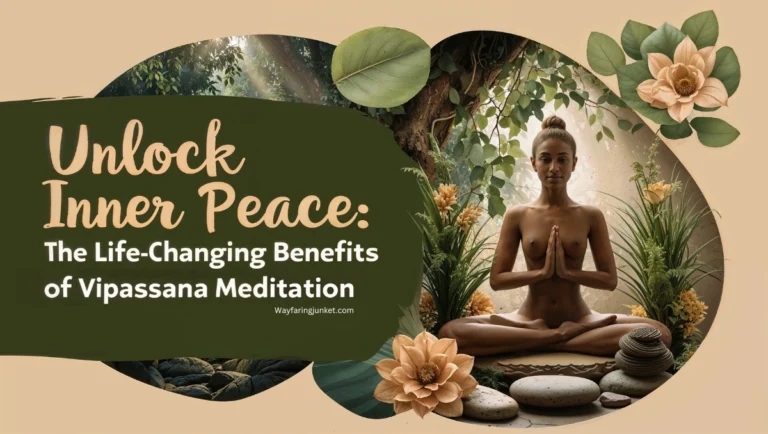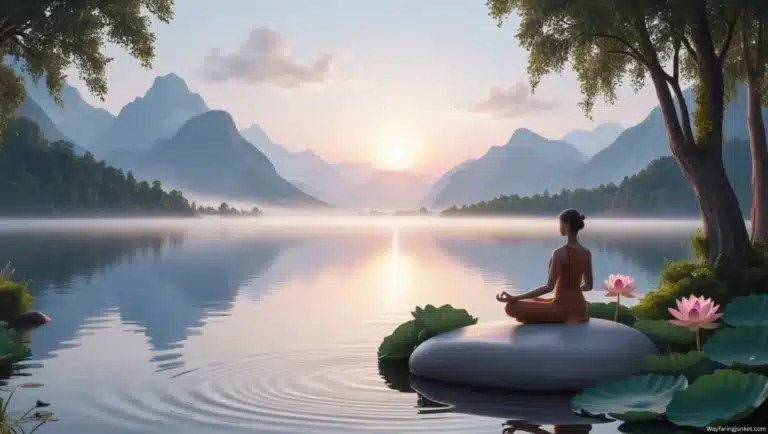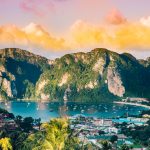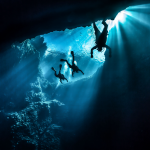Top 10 Nutrient Rich Foods for Optimal Health: Boost Your Diet Today
Supporting your overall health starts with choosing foods packed with essential nutrients. Nutrient-rich foods are crucial in preventing chronic diseases, boosting energy levels, and supporting overall well-being.
No single food provides all the vitamins and minerals your body needs, so maintaining a varied diet is key to optimal health.
In this post, we’ll explore the top 10 nutrient rich foods you should incorporate into your diet, along with their health benefits, delicious ways to enjoy them, and tips for reducing processed foods.
Let’s dive in!
What is Nutrient Density?
Nutrient density refers to the concentration of vitamins, minerals, and beneficial compounds in food relative to its calorie content.
Foods with high nutrient density offer maximum nutrients per calorie, making them excellent choices for a healthy diet.
Prioritizing these foods ensures your body gets what it needs without excessive calories.
Why You Should Avoid Processed Foods
Highly processed foods, such as sugary cereals, packaged snacks, and instant meals, often contain unhealthy fats, sugars, and additives.
Regular consumption of these foods can lead to weight gain, inflammation, and an increased risk of chronic diseases like type 2 diabetes, heart disease, and obesity.
Tips to Reduce Processed Foods:
- Opt for whole-grain options instead of refined grains.
- Swap sugary drinks for water, herbal teas, or fruit-infused water.
- Cook at home to manage ingredients and portion sizes effectively.
Health Benefits of Nutrient-Rich Foods
Incorporating nutrient-rich foods into your diet can provide numerous health benefits:
- Reduce Inflammation: Anti-inflammatory compounds in foods like berries, fatty fish, and leafy greens help combat chronic inflammation.
- Support Digestion: High-fiber foods like kale, potatoes, and berries promote gut health.
- Boost Brain Function: Omega-3 fatty acids from fish and antioxidants from dark chocolate contribute to cognitive health.
- Strengthen Immunity: Nutrient-dense foods offer vitamins and minerals that fortify the immune system.
- Maintain Healthy Weight: These foods are often naturally low in calories and high in fiber, promoting satiety.
10 Best Nutrient-Rich Foods to Add to Your Diet
1. Salmon: The Ultimate Source of Omega-3s

Salmon isn’t just a tasty seafood choice — it’s a nutrient powerhouse that can significantly enhance your overall health. It’s packed with omega-3 fatty acids, high-quality protein, and essential vitamins and minerals that support your brain, heart, eyes, and immune system.
A 100-gram serving of wild Atlantic salmon provides approximately 2.2 grams of omega-3s and 25.4 grams of protein, making it an excellent addition to a balanced diet.
But that’s not all! Salmon is also rich in:
- B Vitamins for energy production
- Potassium to regulate blood pressure
- Selenium boosts immune function
- Antioxidants to protect cells from oxidative damage
Adding salmon to your meals twice a week is an easy and effective way to reduce inflammation, improve cardiovascular health, and support cognitive function. Enjoy the delicious benefits of this superfood!
Ways to Enjoy:
- Grilled or Baked: Drizzle salmon with olive oil, lemon juice, and herbs for a simple yet flavorful dish.
- Salad Topping: Flake cooked salmon over a leafy green salad with avocado and a light vinaigrette.
- Healthy Wrap: Add salmon to a whole-grain wrap with avocado, cucumber, and a dollop of Greek yogurt sauce.
- Salmon Patties: Mix flaked salmon with breadcrumbs, eggs, and herbs to create delicious salmon patties.
2. Sardines: Small Fish, Big Benefits

Sardines are a nutrient-packed seafood choice, offering a generous dose of heart-healthy omega-3 fatty acids. As low-mercury fish, they’re a safer alternative to larger species, making them ideal for regular consumption.
One of the unique benefits of sardines is that they’re typically eaten whole — bones included — providing an excellent source of calcium and vitamin D for stronger bones and teeth.
Along with these, sardines deliver high-quality protein and healthy fats that support overall health.
But that’s not all! Sardines are also rich in:
- Iron and Zinc boost energy levels and immune function
- Selenium for its antioxidant properties, protecting cells from damage
Adding sardines to your diet twice a week is a sustainable and nutrient-rich choice that can improve heart health, bone strength, and overall well-being.
Ways to Enjoy:
- On Whole-Grain Crackers: Top whole-grain crackers with sardines, a squeeze of lemon, and fresh herbs for a quick, nutritious snack.
- In Salads: Add sardines to leafy green or Mediterranean-style salads for a protein boost and a burst of flavor.
- With Pasta: Toss sardines into whole-grain pasta with garlic, olive oil, and capers for a delicious and nutrient-rich meal.
- Blended in Spreads: Mix sardines with Greek yogurt, lemon juice, and herbs to create a creamy dip or sandwich spread.
3. Kale: The Leafy Green Superfood

Kale is a nutrient-dense leafy green, packed with an impressive variety of vitamins, minerals, and antioxidants. With high levels of vitamins A, C, K, and B6, kale supports immune function, skin health, and bone strength.
It also contains powerful bioactive compounds like sulforaphane, which may have cancer-fighting properties. Thanks to its low-calorie content and high nutrient density, kale is an excellent choice for maintaining long-term health.
But there’s more! Kale also provides:
- Calcium and Magnesium to strengthen bones
- Antioxidants to reduce inflammation
- Fiber for better digestive health
Incorporating kale into your meals regularly can boost your immune defenses, lower your risk of chronic diseases, and support overall well-being.
Ways to Enjoy:
- In Smoothies: Blend fresh kale with bananas, berries, and Greek yogurt for a nutrient-packed smoothie.
- In Salads: Massage kale leaves with olive oil and lemon juice to soften them, then toss with nuts, seeds, and feta cheese for a delicious salad.
- In Stir-Fries: Sauté kale with garlic, olive oil, and a splash of soy sauce for a quick and nutritious side dish.
- As Kale Chips: Bake kale leaves with a drizzle of olive oil and a sprinkle of sea salt for a crunchy, guilt-free snack.
- In Soups and Stews: Add kale to soups or stews for extra fiber and nutrients.
4. Seaweed: A Natural Source of Iodine

Seaweed is a nutrient-dense superfood commonly enjoyed in coastal cuisines, especially in Asian cultures. Varieties like nori, kelp, wakame, and dulse are packed with essential minerals, making them a standout source of iodine, which is crucial for maintaining thyroid health.
Beyond iodine, seaweed offers a wealth of nutrients, including:
- Calcium for strong bones
- Iron to boost energy levels
- Magnesium for muscle and nerve function
- Antioxidants to reduce inflammation and support heart health
Some types of seaweed also provide plant-based omega-3 fatty acids and fiber to support digestive health.
Incorporating seaweed into your meals a few times a week can give your diet a powerful nutrient boost, especially if your iodine intake is limited from other sources.
Ways to Enjoy:
- In Soups: Add dried seaweed to miso soup, ramen, or seafood stews for an umami-rich boost.
- On Rice Bowls: Sprinkle roasted seaweed flakes over rice bowls, poke, or bibimbap for a crunchy, salty accent.
- As Sushi Wraps: Use nori sheets to make sushi rolls or rice wraps, paired with vegetables, avocado, and fish.
- In Salads: Mix fresh seaweed varieties like wakame into salads with sesame oil, rice vinegar, and sesame seeds.
- As a Snack: Enjoy seasoned seaweed sheets for a light, savory snack.
Correlated Article:
5. Garlic: Nature's Immune Booster

Garlic has been prized for centuries for its medicinal properties and powerful health benefits. Rich in antioxidants and beneficial compounds like allicin, garlic is known to support heart health by helping to lower blood pressure and cholesterol levels.
But garlic’s benefits don’t stop there. It also boasts:
- Antimicrobial properties to fight infections
- Immune-boosting effects to reduce the severity and frequency of colds
- Sulfur compounds that support liver function and aid in detoxification
Incorporating garlic into your daily meals is a simple and flavorful way to strengthen your immune system, promote cardiovascular health, and support overall well-being.
Ways to Enjoy:
- In Stir-Fries and Soups: Sauté minced garlic in olive oil to add depth and aroma to vegetable stir-fries, soups, or pasta sauces.
- Roasted Whole: Roast whole garlic bulbs in the oven until soft and caramelized, then spread the creamy cloves onto whole-grain bread or mix into mashed potatoes.
- In Salad Dressings or Marinades: Whisk minced garlic into homemade vinaigrettes or marinades for added flavor and nutritional benefits.
- Garlic Butter: Combine roasted garlic with butter or olive oil, herbs, and lemon juice for a delicious spread or vegetable topping.
- As a Flavor Booster: Add finely chopped garlic to sautés, stews, or grain bowls for a savory, umami-rich taste.
6. Shellfish: Nutrient-Dense Seafood

Shellfish like clams, oysters, and mussels are among the most nutrient-dense foods you can enjoy. They offer a concentrated source of essential vitamins and minerals, particularly vitamin B12, zinc, and iron, which are vital for energy production, immune function, and brain health.
With their low-calorie and high-protein profile, shellfish make an excellent addition to a balanced diet.
Additional benefits of shellfish include:
- Omega-3 fatty acids to support heart health
- Selenium with antioxidant properties to protect cells from damage
- Iron and Zinc to boost immunity and maintain energy levels
Incorporating shellfish into your meals once or twice a week can significantly enhance your nutrient intake, promote overall well-being, and add delicious variety to your diet.
Ways to Enjoy:
- Steamed with Garlic and White Wine: Steam clams or mussels with garlic, white wine, and fresh herbs for a classic, flavorful dish.
- In Pasta Dishes: Toss shellfish into whole-grain pasta with olive oil, tomatoes, and basil for a nutrient-rich seafood pasta.
- Fresh with Lemon Juice: Serve fresh oysters on the half shell with a squeeze of lemon and a dash of hot sauce for a briny, refreshing appetizer.
- In Soups and Stews: Add shellfish to hearty seafood chowders or Mediterranean-style seafood stews for a comforting meal.
- Grilled or Baked: Top oysters or clams with breadcrumbs, garlic, and Parmesan cheese, then bake or grill for a crispy, indulgent treat.
7. Potatoes: The Energy-Packed Vegetable

Potatoes are a versatile and nutrient-rich vegetable that often doesn’t get the credit it deserves. When eaten with the skin, they offer a generous supply of potassium, magnesium, iron, fiber, and vitamin C.
Unlike refined carbs, potatoes provide slow-releasing energy that helps keep you full longer while maintaining stable blood sugar levels. Plus, they’re naturally low in fat and cholesterol-free, making them a wholesome choice for a balanced diet.
Other health benefits of potatoes include:
- Heart Health support through potassium, which regulates blood pressure
- Muscle Function support from magnesium and potassium
- Digestive Health with fiber that aids digestion
For an extra boost of antioxidants, choose colorful varieties like purple or red potatoes. To get the most nutritional value, enjoy potatoes in their natural form, skin-on — whether roasted, baked, or boiled.
Ways to Enjoy:
- Roasted or Baked: Slice potatoes into wedges, toss with olive oil, garlic, rosemary, and sea salt, then roast for a crispy, golden side dish.
- Mashed with Garlic and Olive Oil: For a healthier twist on mashed potatoes, use olive oil instead of butter and add roasted garlic for extra flavor.
- In Stews and Soups: Dice potatoes and add them to hearty vegetable stews, chowders, or curries for a filling, nutrient-dense meal.
- Stuffed Potatoes: Bake whole potatoes, scoop out the flesh, and mix with veggies, beans, or lean protein before returning it to the skin for a satisfying meal.
- Potato Salad: Combine boiled potatoes with Greek yogurt, mustard, and fresh herbs for a creamy yet nutritious side dish.
8. Liver: A Nutrient Powerhouse

Beef liver is one of the most nutrient-dense foods you can eat, packed with essential vitamins and minerals. It’s especially rich in vitamin B12, iron, and vitamin A — all crucial for maintaining energy levels, supporting red blood cell production, and promoting healthy vision.
A small serving of liver can provide a week’s worth of these nutrients, making it an incredibly powerful addition to your diet when consumed in moderation.
Additional benefits of liver include:
- Folate to support cell growth and repair
- Copper for energy production and brain function
- High-quality protein for muscle repair and immune support
To get the most nutritional value, opt for grass-fed or organic liver to ensure higher nutrient content and reduced exposure to harmful substances. Enjoying liver once a week is a smart way to boost your overall wellness.
Ways to Enjoy:
- Sautéed with Onions: Slice liver thinly and sauté with onions, garlic, and fresh herbs for a savory and classic dish.
- In Pâtés: Blend cooked liver with butter, garlic, and spices to create a creamy, nutrient-dense spread for whole-grain bread or crackers.
- Added to Stews: Incorporate chopped liver into hearty stews or soups to enhance both the flavor and nutrient content.
- Ground and Mixed: Combine finely minced liver with ground beef for burgers, meatballs, or meatloaf for a subtle nutrient boost.
- Marinated and Grilled: Marinate slices of liver in lemon juice, olive oil, and herbs, then grill for a smoky, tender dish.
9. Berries: Antioxidant-Rich Superfoods

Berries may be small, but they pack a powerful nutritional punch. Loaded with antioxidants, especially anthocyanins, berries help protect your cells from oxidative stress and reduce inflammation. Their vibrant colors and sweet-tart flavors make them both a delicious and nutritious choice.
Berries are also an excellent source of:
- Fiber to support digestive health
- Vitamin C to boost immunity and promote skin health
- Vitamin K for bone and heart health
Thanks to their low-calorie content and low glycemic index, berries are a smart option for those managing blood sugar levels.
For maximum health benefits, enjoy a mix of blueberries, strawberries, raspberries, and blackberries regularly.
Ways to Enjoy:
- Mix into Yogurt or Oatmeal: Add a handful of fresh or frozen berries to Greek yogurt or oatmeal for a delicious and nutrient-dense breakfast.
- Blend into Smoothies: Combine berries with leafy greens, a banana, and plant-based milk for a refreshing antioxidant-packed smoothie.
- Enjoy as a Fresh Snack: Eat them on their own as a hydrating, low-calorie snack that satisfies your sweet cravings.
- Bake into Desserts: Incorporate berries into muffins, cakes, or healthy crisps for a natural burst of sweetness.
- Add to Salads: Toss berries like blueberries or strawberries into leafy green salads for a touch of sweetness and added nutrients.
- Freeze for Later: Store berries in the freezer for long-term use in smoothies, sauces, or baked goods.
10. Eggs: Nature's Perfect Protein

Eggs are often called nature’s perfect food — and for good reason. They’re packed with high-quality protein, healthy fats, and a variety of essential vitamins and minerals.
One of their standout nutrients is choline, which plays a crucial role in brain development and liver function. Eggs are also rich in lutein and zeaxanthin, two powerful antioxidants that protect eye health and may lower the risk of age-related macular degeneration.
For even more nutrition, consider choosing pasture-raised or free-range eggs, which often contain higher levels of omega-3 fatty acids and vitamins.
Key benefits of eggs include:
- Muscle Maintenance thanks to high-quality protein
- Brain Support from choline
- Eye Protection from antioxidants
Affordable, versatile, and nutrient-dense, eggs are a fantastic addition to any balanced diet.
Ways to Enjoy:
- Boiled, Scrambled, or Poached: Serve eggs on their own, over whole-grain toast, or with avocado for a quick and nutritious meal.
- Add to Salads or Sandwiches: Chop hard-boiled eggs into salads for extra protein or layer them into sandwiches for a satisfying lunch.
- Make a Nutrient-Rich Omelet: Combine eggs with vegetables like spinach, bell peppers, and tomatoes for a fiber and nutrient boost.
- Baked in Casseroles: Use eggs as a base for veggie-packed breakfast bakes or frittatas.
- In Stir-Fries or Fried Rice: Scramble eggs into rice or stir-fries for added protein and flavor.
- Deviled Eggs or Egg Salad: Make a creamy egg-based snack using Greek yogurt or avocado instead of mayo for a healthier twist.
Conclusion: Start Your Journey to Better Health
Incorporating these nutritious foods into your diet can make a lasting impact on your health, energy levels, and overall well-being. From the heart-healthy benefits of salmon to the antioxidant power of berries and the nutrient boost from leafy greens like kale, every bite brings you closer to a healthier you.
Take the first step today by adding these superfoods to your meals and cutting back on processed foods. Your body will thank you!
Which nutrient-rich food is your favorite? We’d love to hear from you! Share your thoughts on our social media and don’t forget to subscribe to our email list for more health tips and delicious recipes.
Frequently Asked Questions (FAQs) about Nutrient Rich Healthiest Foods
Nutrient-rich foods are those that provide high amounts of vitamins, minerals, and antioxidants with relatively few calories. They are essential for maintaining good health and preventing chronic diseases.
Start by including more fruits, vegetables, lean proteins, and whole grains in your meals. Swap processed snacks for nuts or berries and choose whole foods over packaged products.
Most fruits and vegetables are nutrient-dense, but dark leafy greens, berries, and cruciferous vegetables like broccoli tend to be the most beneficial.
Avoid processed foods high in added sugars, unhealthy fats, and artificial additives. Soda, sugary snacks, and fried foods are examples to limit.
These foods are often low in calories and high in fiber, promoting fullness and reducing overeating.
Yes! Seasonal produce, frozen vegetables, legumes, and canned fish are all nutrient-dense and affordable options.
Aim to include nutrient-rich foods in every meal to ensure your body gets a consistent supply of essential vitamins and minerals.
Yes, vegetarians can get essential nutrients from foods like lentils, quinoa, tofu, nuts, seeds, spinach, and fortified plant-based products. Leafy greens and legumes are excellent sources of iron, while chia seeds and flaxseeds provide omega-3 fatty acids.
Check the label for the amount of vitamins, minerals, and fiber relative to its calorie content. Whole, unprocessed foods with vibrant colors, such as leafy greens, berries, and orange vegetables, are often nutrient-dense.
Absolutely! Foods rich in antioxidants, like berries, avocados, and walnuts, protect the skin from damage. Omega-3 fatty acids from salmon and flaxseeds also support skin elasticity and hydration.
Yes, in many cases. Frozen fruits and vegetables are often picked and frozen at peak ripeness, preserving their nutrients. They can be a convenient and cost-effective way to maintain a nutrient-dense diet.
- Greek yogurt with berries and chia seeds
- Apple slices with almond butter
- Carrot sticks with hummus
- Mixed nuts and dried fruit (in moderation)
- Boiled eggs with avocado
Yes, foods like fatty fish, nuts, dark chocolate, and leafy greens contain antioxidants and omega-3s that support brain function and may reduce symptoms of anxiety and depression.
- Add spinach or kale to smoothies.
- Top oatmeal or yogurt with berries and nuts.
- Swap white rice for quinoa or brown rice.
- Include beans or lentils in soups and stews.
- Drizzle olive oil over salads for healthy fats.
Absolutely. For example:
- Gluten-free: Quinoa, brown rice, and sweet potatoes.
- Dairy-free: Almond milk, fortified soy milk, and leafy greens for calcium.
- Nut-free: Pumpkin seeds, sunflower seeds, and legumes for protein.
Yes, foods like berries, fatty fish, olive oil, and leafy greens contain antioxidants and healthy fats that reduce inflammation, which is linked to chronic diseases.
Definitely! Nutrient-rich foods are often low in calories but high in fiber, keeping you full longer. Incorporate lean proteins, vegetables, and whole grains for effective weight management.
Aim to fill at least 80% of your plate with nutrient-dense foods like vegetables, fruits, lean proteins, and whole grains. The remaining 20% can include treats or processed foods in moderation.














